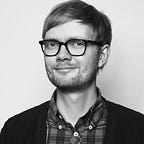Design for coastal development
How can we use design to explore new possibilities for coastal development in the North? And can digital resources and services be used to unlock potentials for more attractive and sustainable societies along the northern coast?
A few weeks ago we started a new project called ‘Design for coastal development’ in Eastern Finnmark — about using design to explore possibilities for coastal development. The project is a collaboration between the new Kystutviklingssenteret [The Coastal Development Center] in Kirkenes, Sør-Varanger Utvikling and researchers and students from the Oslo School of Architecture and Design.
The goal for the ‘Design for coastal development’ is to explore how strategic use of design and design-methods can contribute to societal innovation in coastal towns and communities in the North. The project will have a particular focus on how digital resources and services might unlock new potentials for developing sustainable, equitable and attractive societies. Through this project we want to contribute to exploring possible connections between sustainability and societal and technological innovation. We believe that design-methods can contribute to this by offering creative, critical and strategic tools for both short term solutions, and proposals for long term sustainable, societal change.
This Autumn, the ‘Design for Coastal Development’ project is the case for our AHO course ‘Strategic design for society’. A group of 16 Masterstudents from across the worlds will spend 10 weeks exploring how to design technologies, services, interventions and policies that addresses three main cases:
- The coast as a knowledge society. Could the coast be an arena for new kinds of decentralized research and education? How can we design for knowledge hubs and networks of expertise? How can we design for a knowledge culture?
- The coast as an arena for exploring new industries and new kinds of jobs. Could the coast be a starting-point for new kinds of sustainable industries? Could the coast offer new kinds of jobs and new ways of working? What could innovation and entrepreneurship mean in the context of the northern coast?
- The coast as an attractive, everyday society. How can we design for an attractive, sustainable and enjoyable everyday life along the coast? What makes coastal communities attractive for citizens? How could we develop decentralized social and cultural infrastructure with the use of digital resources? How could we facilitate community developers and design for belonging and community? How do we get young people to establish themselves in coastal communities?
The students will work with issues such as social infrastructure, meeting places, culture, innovation, decentralisation, digitalisation, policy and everyday life. Full description here.
The first week of October 2023 we kicked the project of with a week-long fieldtrip to Kirkenes and Sør-Varanger for the students and researchers in the project. Our aim for the fieldwork was to get to see Sør-Varanger from multiple different angles through the different people we talked to and interviewed, and the places we visited. This way we got to look at the municipality through different kind of lenses, looking issues such as policy and industry, indigenous perspectives, innovation and technology, history and culture, art and nature, research and science etc.
We were based was Nothing Hill at Prestøya where we worked with our partners at Sør-Varanger Utvikling, Kystutviklingssenteret and other actors based there. The students got to stay in the old Elevhjemmet (a humble architectural gem from 1973) and we used the classrooms and facilites at Nothing Hill for interviews and workshops. (Sør-Varanger made a podcast-episode where Einar talked about our visit).
During our week in Sør-Varanger we visited many different rganisations and people. We got interesting talks, or did interviews, with among others: Pikene på Broen, the Barents Institute, the Barents Secretariat, artist Silje Figenschou Thoresen, NIBIO Svanhovd, Ä´vv Skolt Sami Museum, Bugøynes Bistro, Norway King Crab, Lassigården and Elsa Halvorsen, Samovarteateret, Barel, Solhaug Maritim, Snappy, Kirkenes24, Orinor, Kirkeneskonferansen, the ICE innovation festival, Øst-Finnmark Kunnskapssenter, Finnmark productions, Grenselandsmuseet. We visited Pasvik, Bjørnevatn (and the brilliant new activitypark Andedammen), Grense Jackobselv, Prestøya, Kirkenes, Bugøynes, Neiden and more. A fully packed and exciting week.
Thanks to everyone that took the time to meet us and contributed to a great week!
Back at AHO we will now start the work of collecting and visualising our observations and reflections from Sør-Varanger. We will then develop concepts and ideas by asking ‘What if?’-questions and explore how new opportunities could be explored. Following this we will create prototypes and scenarios for testing and discussion, and finally pull all the threads together and reflect on how these designs and proposals can point towards short and long term societal value.
The project will be concluded with a closing seminar in the beginning of December 2023!
Project-partners
The Oslo School of Architecture and Design / Strategic design for society
Students: Shreya Bhattacharya, Daphne Lara Uy Chan, Lilijean Larbi Comlan, Meike Huisman, Marieliz Morales Vega, Tianyi Shi, Alessandro Valli, Anne Sofie Mo Brakstad, Trine Truchs Erga, Johanna Forss, Hannah Elisabeth Hove, Mira Beichmann Krogh, Sunniva Wildhagen Lislevand, Ida Sofie Sætre Mahle, Kari Anne Grønbech Olafsdottir, Eline Mikhela Degnes Olsen.
Teachers / researchers: Einar Sneve Martinussen and Joakim Formo
Kystutviklingssenteret
Ole Øvretveit
Sør-Varanger Utvikling
Kenneth Stålsett and many more.
At AHO this project connects to our research on digital societal- and urban development, innovation in the public sector, and our participation in D-Box: The National Center for Transforming Public Services. The project have received external funding from Troms and Finnmark Fylkeskommune through mobility grants for research and higher education.
